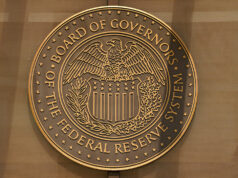Peso sinks further on yuan move

THE PESO sank on Tuesday as tensions between the world’s two largest economies escalated further after the former tagged the latter as a “currency manipulator.”
The local currency shed 16.5 centavos to P51.955 against the greenback on Tuesday from the P51.79-per-dollar close on Monday.
The peso touched the P52-per-dollar level when it opened the session at P52.10 against the dollar, which was also its intraday low. Meanwhile, it climbed to as high as P51.88 versus the greenback.
Tuesday’s volume thinned to $1.32 billion from $1.39 billion that exchanged hands on Monday.
“The peso weakened significantly due to demand for safe-haven currencies after the US Treasury Department labelled China as a ‘currency manipulator,’ further heightening current tensions between the US and China,” a trader said in an e-mail interview.
“When trading opened at P52.10 [yesterday morning]…this was brought by market’s reaction to Chinese devaluation [on Monday],” another trader said in a separate phone interview.
“Profit taking occurred when peso hit a high of P51.88, in reaction to better-than-expected CPI (consumer price index) data as well as the market reaction to the news that BSP (Bangko Sentral ng Pilipinas) chief said it could ease by at least 50 bps (basis points) until the end of the year,” the second trader added.
Last Monday, financial markets took a battering after the People’s Bank of China fixed its exchange rate at 7 yuan against the dollar — the lowest in a decade — in response to US President Donald J. Trump’s plan to impose an additional 10% tariffs on $300 billion worth of Chinese goods by Sept. 1.
Reuters reported on Tuesday that the US tagged China as a “currency manipulator” for the first time since 1994, dramatically escalating the trade conflict between the world’s two biggest economies.
Back home, the Philippine Statistics Authority reported that the general increase in prices of widely used goods and services continued to cool in July to 2.4% from 2.7% in June and 5.7% in July 2018, strengthening the case for the BSP to cut policy rates at its review on Thursday.
The latest print matched the median estimate in a BusinessWorld poll of 17 analysts and settled at the midpoint of the 2-2.8% forecast range given by the BSP for that month.
For the year thus far, inflation averaged at 3.3%, within the central bank’s 2-4% target band for the year and the Development Budget Coordination Committee’s 2.7-3.5% assumption. However, this was still higher than the downward-revised 2.7% full-year forecast of the central bank.
Meanwhile, Bloomberg reported on Monday that BSP Governor Benjamin E. Diokno expects to ease policy rates by another 50 bps this year.
“The local currency might recover [today] as market participants might start taking profits following the recent sharp declines of the peso,” the first trader said.
The first trader expects peso to move within P51.80 to P52.10 today, while the second one sees it trading “at a wide range” between P51.80 and P52.20. — Mark T. Amoguis



